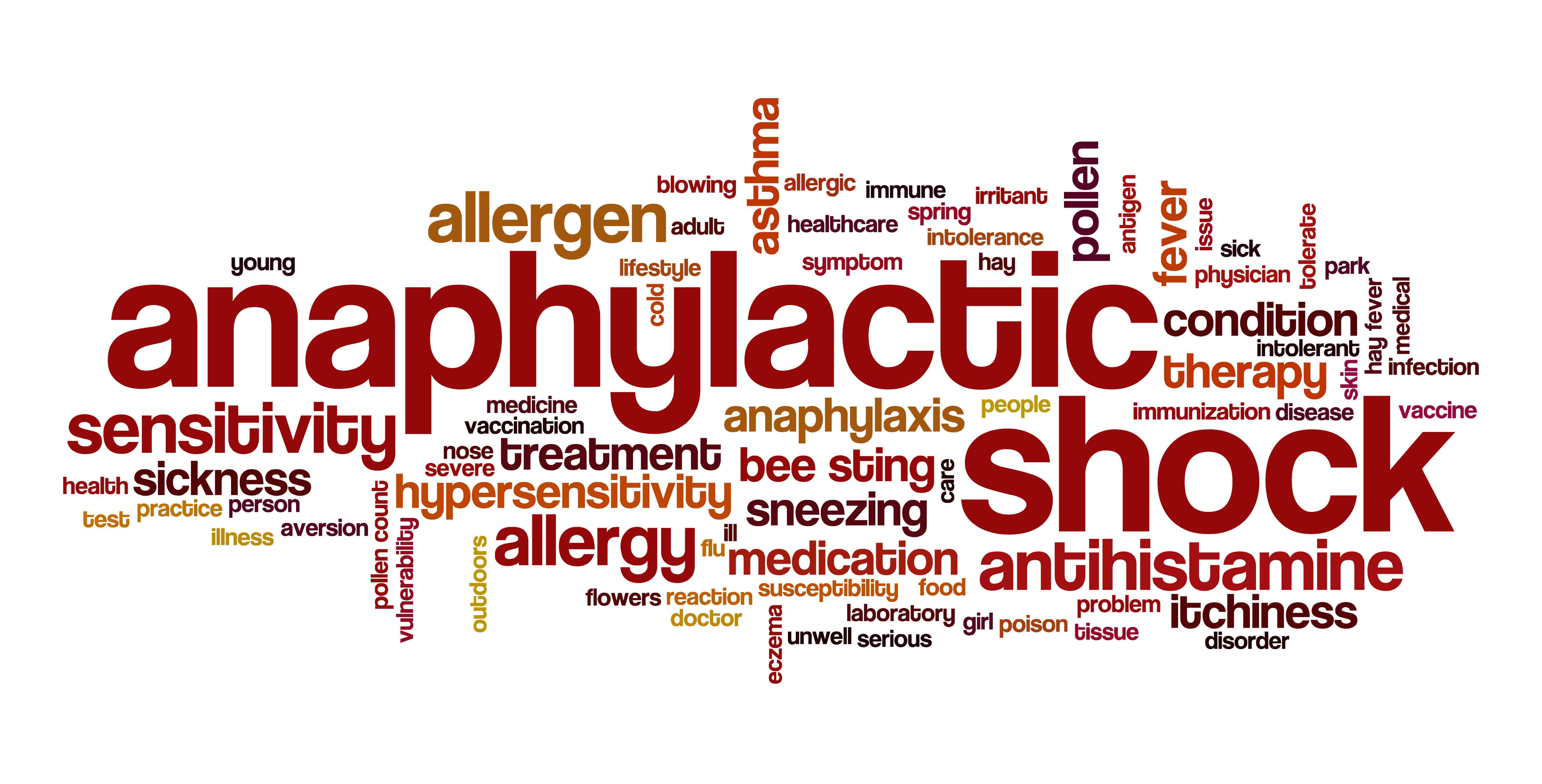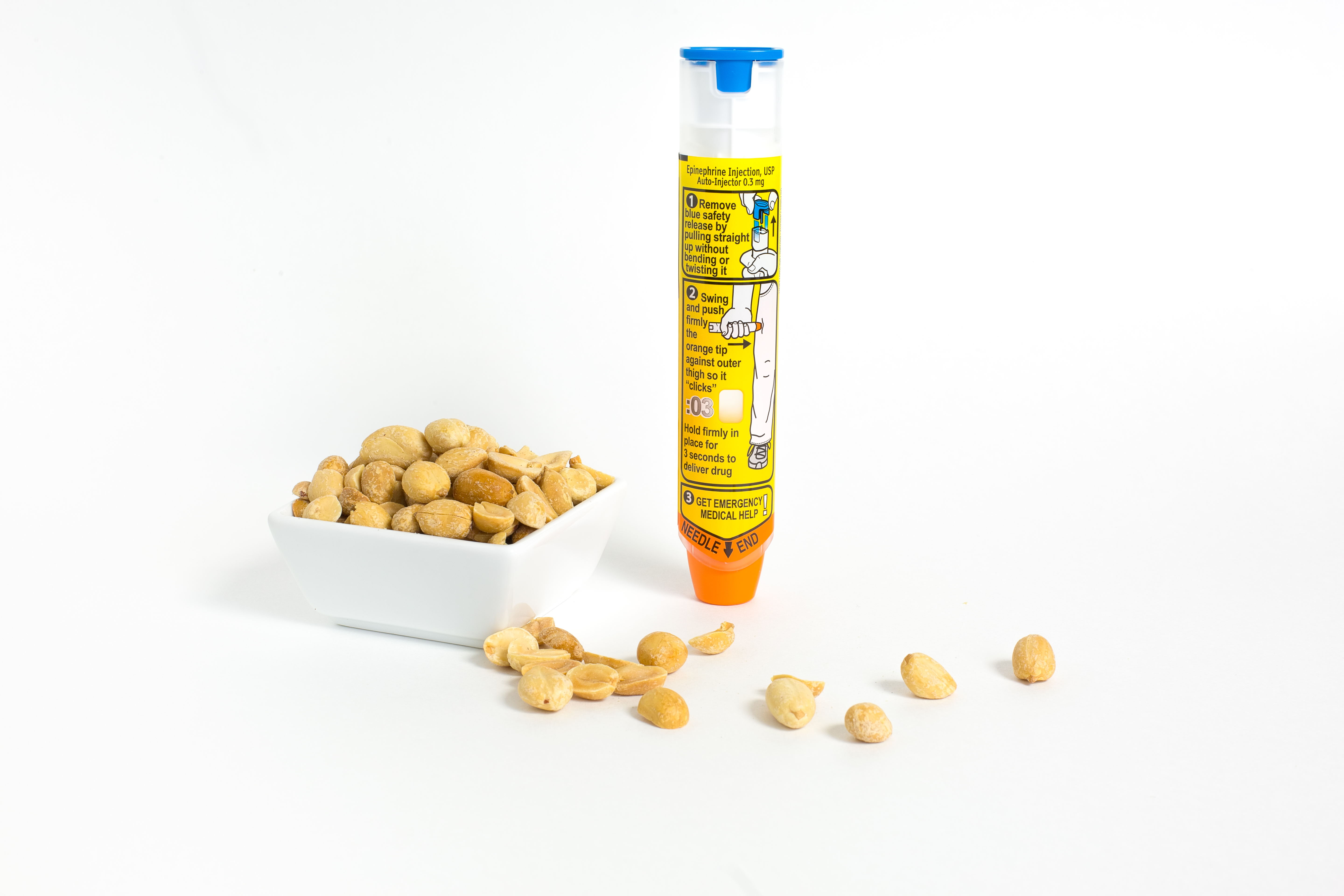 The EpiPen® is a type of auto-injector used to treat anaphylaxis. Inside of the EpiPen® is a medicine which is called adrenaline. Adrenaline acts quickly to control the symptoms of anaphylaxis. It narrows the blood vessels so that blood pressure can start to return to normal and also relaxes the lungs and throat so you can breathe more easily.
The EpiPen® is a type of auto-injector used to treat anaphylaxis. Inside of the EpiPen® is a medicine which is called adrenaline. Adrenaline acts quickly to control the symptoms of anaphylaxis. It narrows the blood vessels so that blood pressure can start to return to normal and also relaxes the lungs and throat so you can breathe more easily.
The EpiPen® Auto-Injector is a very common unit on the market. At all times you must keep your auto-injector in its case. With all auto-injectors, there are instructions down the front here. It is always worth making sure you read them, particularly if you’re helping somebody else with their auto-injector.
Using the EpiPen®
Even if you already know, quickly read the instructions again, just so that you can remind yourself exactly what’s what. The needle is at the orange end, and at the blue end is the safety cap. Grip it firmly in your hand and remove the blue cap. That is just the safety cap, so once the cap is removed, the unit is live. If for any reason you have taken the cap off and then you don’t use it, you can just replace the cap.
But be very careful when the cap is off because if you push the orange end down, it will fire the drug out of the needle. You may end up firing the drug into yourself which would not be good.
When administering the drug, make sure that it will not go through any thick seams. The seams could cause problems with the needle and could cause problems when administering the needle. Swing the needle into the leg and hold for 3 seconds. With other auto-injectors, you will need to rub the area you have injected. With the EpiPen® however, the drug diffuses on its own and you do not need to rub the area.

A Few Tips
- Lie down with your legs slightly elevated to keep your blood flowing or sit up if breathing is difficult.
- There is no need to remove clothing to use your EpiPen®. Make sure the orange end will not hit any buckles, zips, buttons or thick seams on your clothes.
- Unconscious but breathing patients should be placed in the recovery position.
Once the unit has been activated, a needle cover will appear over the needle so you do not accidentally injure yourself. With any anaphylactic emergency, you need to make sure that you have called the emergency services. It’s always a good idea to give the unit to the emergency services. They will then dispose of them correctly. And also, they know exactly what has been given to the patient. If you do end up giving a second dose, then follow exactly the same rules, but make sure that both units are then given to the emergency services.
For more information on training courses, visit our “Courses” page which also includes our First Responder and First Person on Scene (FPOS) Courses.

